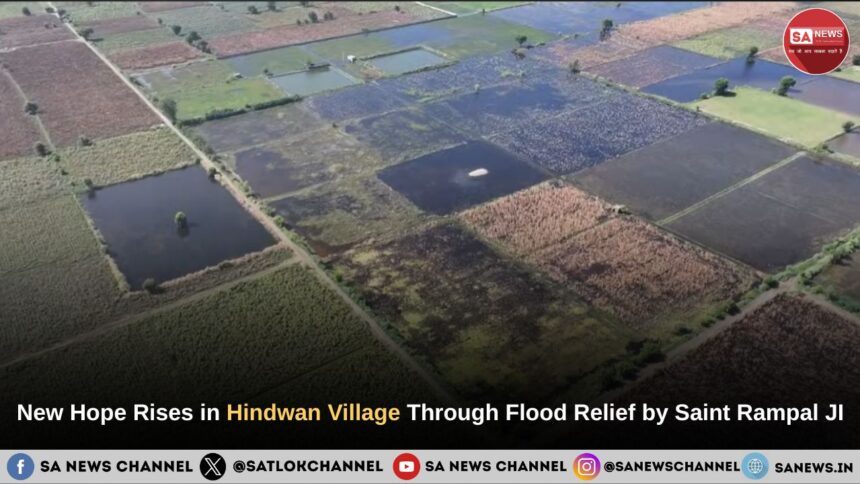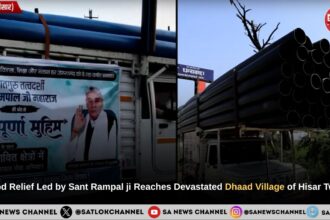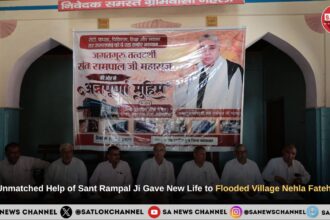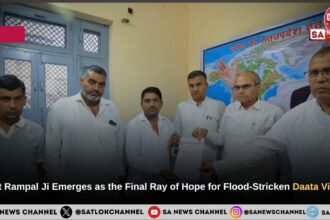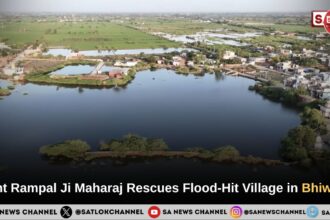Due to continuous rainfall and overflowing drains in Hindwan village, Hisar district, fields, homes, schools, and Anganwadi centers were submerged. Nearly all crops were destroyed, livestock was affected, and daily life was thrown into disarray. In the absence of administrative support, villagers faced a severe crisis.
Lack of Administrative Support and Appeal to Saint Rampal Ji Maharaj
With water levels rising up to eight feet, villagers had to evacuate their homes. Many families temporarily sought shelter with relatives, while a large number remained trapped in their houses. Muddy streets and contaminated water disrupted movement entirely. Children’s education was halted as schools and Anganwadi centers were submerged. Despite repeated requests to the authorities, no substantial help was provided, prompting the village council to seek assistance from Saint Rampal Ji Maharaj.
A written request was submitted to the Barwala Ashram, asking for technical support to drain the floodwater. The request mentioned the need for three large 20-horsepower motors and a 12,000-feet long 8-inch pipeline.
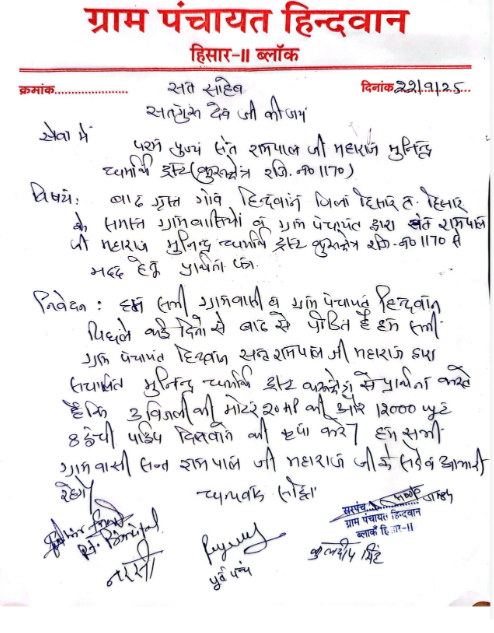
Relief Materials and Technical Support by Saint Rampal Ji Maharaj
Sant Rampal Ji Maharaj immediately instructed them to dispatch these materials. Commencement of Relief Operations. Upon receiving the materials, the village council began the relief operations. The plan was to drain most of the floodwater within 10–15 days, making the fields usable again for the next crop sowing.
Social and Economic Impact
Agricultural experts in the village stated that if the water is fully drained within the next two weeks, farmers will be able to sow their Rabi crops on time, partially mitigating economic losses. Repair work in local schools is also planned.
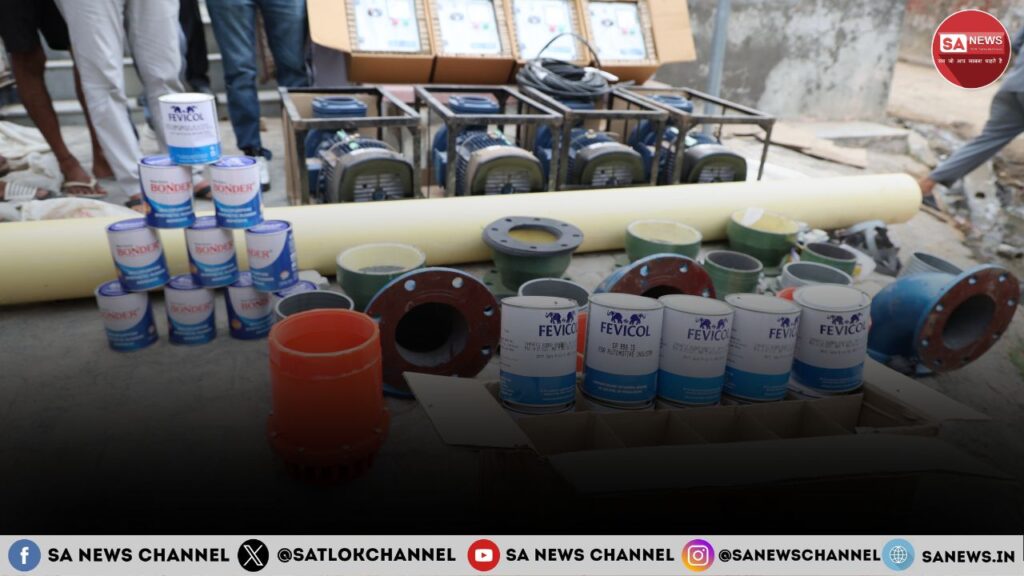
Saint Rampal Ji Maharaj’s initiative instilled trust and self-confidence among villagers, showing that solutions are possible even in difficult circumstances through service and cooperation.
Village Rehabilitation Plan
The village council announced that once the floodwater is fully drained, cleaning, road repairs, and reconstruction of public areas will be carried out in phases. All resources will be used transparently and honestly.
Read in Hindi: हिंदवान गाँव में बाढ़ राहत कार्यों से जागी नई उम्मीद, संत रामपाल जी महाराज की सेवा ने बदला परिदृश्य
National-Level Inspiration
The service of Saint Rampal Ji Maharaj is not limited to Hindwan village. Following his directives, assistance is being extended to flood-affected areas across India, including Punjab, Himachal Pradesh, Jammu & Kashmir, and Uttarakhand. This initiative is seen as the beginning of a new chapter of social cooperation and self-reliance in rural areas.
Relief Operations and Villagers’ Response
The flood relief work initiated in Hindwan village by Saint Rampal Ji Maharaj has revitalized the lives of villagers. They stated that over the past months, floods had completely destroyed their fields, homes, and schools, and no substantial help came from authorities. Saint Rampal Ji Maharaj’s swift intervention gave them hope. The three large 20-horsepower motors and 12,000-feet pipeline sent upon the council’s request began draining the water, reducing standing water in homes and potentially saving crops in the fields.
Also Read: Tatvadarshi Sant Rampal Ji Maharaj Saved Bugana Village from Devastating Floods
Farmers specifically mentioned that Saint Rampal Ji Maharaj’s service proved to be a blessing. Without timely relief, sowing the next crop would have been delayed, increasing economic losses. Villagers expressed hope that, with the saint’s grace, their village would soon return to normal and be better prepared for future disasters. Through this service, trust, cooperation, and social unity were fostered in Hindwan village.
The Grace of Saint Rampal Ji Maharaj
The flood relief in Hindwan village demonstrated that with divine guidance and proactive service, even the most challenging situations can be overcome. Saint Rampal Ji Maharaj’s initiative not only provided relief to one village but also illustrated that true devotion lies in selfless service.
Villagers actively participated in the relief work, fulfilling their social responsibility and pledging to be prepared for future disasters. Gradually, normal life is being restored in the village, and farmers are preparing for the next crop.


